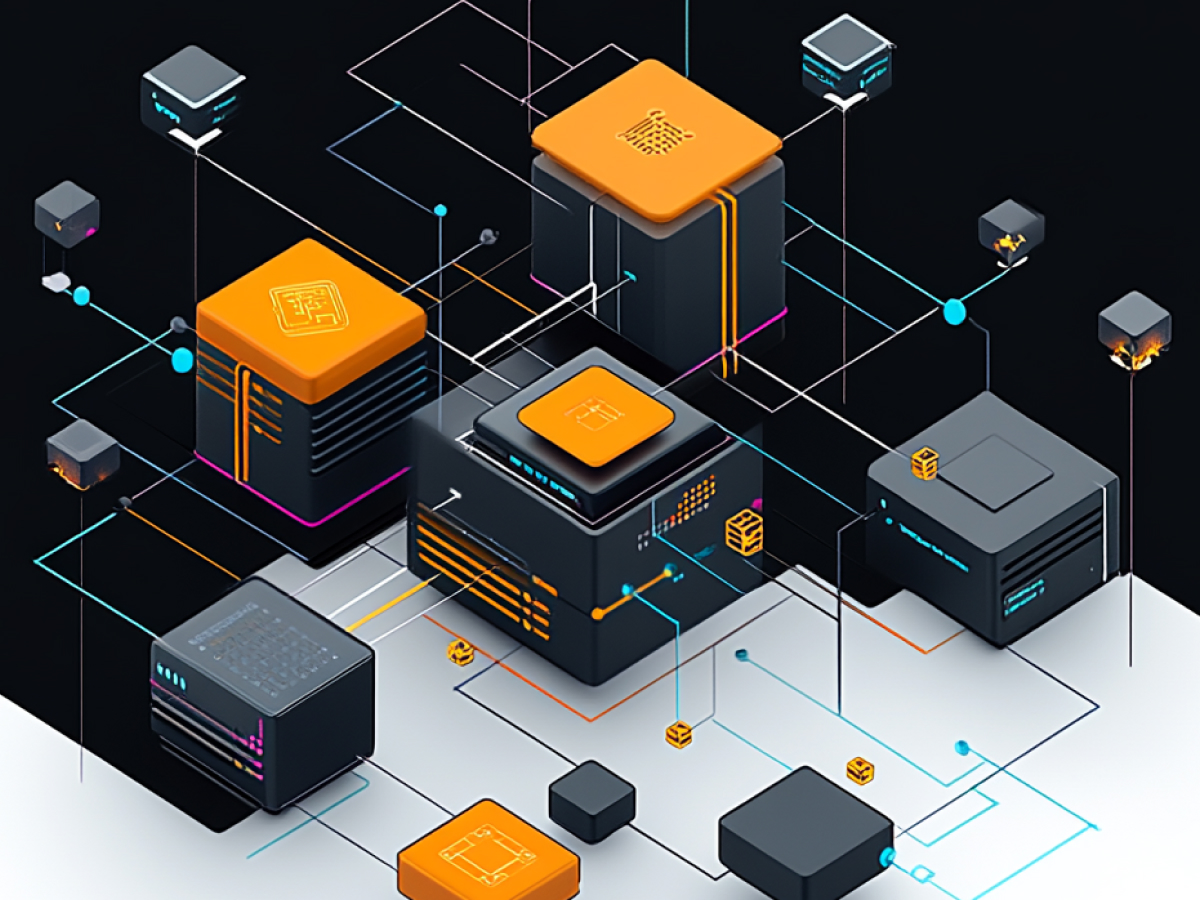Generative AI is changing software development
We’re changing who can write code and at what speed. Generative AI is pushing software development forward in a serious way. What used to take a team of engineers days or weeks to prototype can now be built in hours. Tools like GitHub Copilot, Cursor, Replit, and Devin are showing us that machines, when given the right context and guidance, can generate high-quality code, structure projects, and even automate reviews or deployments. All you need is a clear prompt and minimal hand-holding.
Instead of wasting time writing boilerplate code or doing repetitive fixes, engineers now guide AI tools to do that while concentrating on higher-value decisions, system design, architecture, scalability, and security. It’s still your job to understand how systems interact, what business logic matters, and where risk lives. AI won’t tell you how to thread that needle. But it can get rid of the noise on the runway.
We’re already seeing it in action. Developers can use AI to generate application skeletons, auto-complete functions based on project context, and suggest smart improvements anchored in real-world patterns. These systems are trained on vast amounts of public code. That means what’s generated often matches best practices… and sometimes exposes legacy code for what it is: outdated.
This shift also opens doors to non-traditional developers, those with enough domain knowledge but not enough programming background. With autonomous tools like Devin or Bolt, someone can describe an app in plain English, and the AI builds a prototype from scratch. These tools are running in production with real users behind them.
Here’s the nuance: generative AI is not reliable out of the box. It doesn’t always write secure, scalable, or optimized code. It guesses based on patterns. That’s why businesses still need experienced engineers to validate, shape, and steer these output suggestions. Context is king here. An AI might produce what looks like a functioning solution, but without understanding the business environment, regulations, or technical debt in your stack, it’s just a gamble.
For CEOs and CTOs, the priority should be building teams that know how to work with AI, not against it. The value isn’t in typing more code, it’s in reducing development cycles, empowering more builders, and compounding productivity over time. Start by training your existing engineers to engage with AI tools daily. Identify process bottlenecks that are ripe for automation. And don’t wait for AI to mature perfectly, it won’t. Teams that adapt now will be the ones leading this next evolution of software.
AI-Enhanced operations automate observability and incident response
Modern systems are too complex for traditional methods of monitoring and operations. The scale, speed, and interconnectedness of today’s distributed applications generate volumes of telemetry data that human teams simply can’t keep up with. That’s no longer theoretical, it’s fact. Manual log analysis, static dashboards, and script-based alerts were enough five years ago. They’re not now.
AI has stepped up where human capability starts to saturate. Tools powered by machine learning and generative AI, like those inside New Relic, Splunk, and DataDog, are already doing more than just flagging anomalies. They’re reading historical logs, understanding system behavior in real time, and detecting problems before they impact users. The use case is clear: predictive analytics to see what’s likely to break, behavioral analytics to identify access issues or insider threats, and automated root cause analysis that uses real-world signals to trace issues back to their origin fast.
Resolve.ai, for example, ingests logs, traces, documentation, deployment data, and even internal wiki knowledge to identify problems and suggest actionable solutions. Not guesses, steps. It’s starting to compile system history and institutional memory, so when something goes wrong, it knows what happened last time and can surface the fix, often before engineers even open their terminal.
For an executive team, this is risk mitigation. Every minute your system is down or degraded costs money. Mean Time to Resolution (MTTR) impacts user trust and churn. With AI-enabled operations, MTTR drops because the system highlights the fix faster. Errors get resolved before they spiral into outages.
There’s a shift happening in roles too. Operations teams are no longer measured just on uptime, they’re now expected to design AI-driven observability strategies. Writing automation scripts or logging queries isn’t enough. These teams need to tune AI, ensure it has access to relevant data, and validate the decisions it makes. That means understanding how systems break, and how AI interprets those breaks, and why.
Here’s the nuance for business leaders: AI doesn’t replace your ops team. It makes that team significantly more effective. But only if they know how to guide the AI and apply business context. AI has no built-in understanding of impact. It can prioritize alerts, but it doesn’t know which customers are on a critical path until your team teaches it. Human oversight aligned with system intelligence is what delivers outcomes.
Executives should invest in training ops leaders on how to implement and manage these tools. Don’t wait for a crisis to modernize operations, it’s cheaper and more useful to get ahead. Give your teams time to experiment on non-critical systems, explore automation frameworks, and learn what metrics actually drive business outcomes. Speed, reliability, and resilience are no longer about scale, they’re about the intelligence behind how your systems are run.
Dynamic, context-aware documentation transforms developer support
Documentation is no longer just a static resource sitting on a website or buried in a support portal. With the speed of software delivery accelerating, static content simply can’t keep up. Features change. APIs evolve. Codebases shift. If your documentation is out of sync, your support load increases, and users waste time searching through outdated or irrelevant information.
AI has changed what’s possible here. Retrieval-Augmented Generation (RAG) now powers systems that generate live, context-aware documentation. That means responses pulled directly from up-to-date codebases, API specifications, developer conversations, and live documentation repositories. Instead of searching for answers, developers interact with AI-based chat interfaces embedded directly into product environments. They ask a question, get a relevant response based on the exact state of the documentation and the code, and continue their work without breaking flow.
Tools like CrewAI’s “Chat with the Docs” and platforms such as Kapa.ai, Inkeep, and Pylon are already delivering clear ROI. Kapa.ai and Inkeep plug directly into developer portals and product interfaces, replacing traditional FAQ lookups with intelligent, conversational interactions. Developers get immediate, accurate answers specific to their version, usage pattern, and current context—in many cases, faster than human support can respond. Technical writers can now focus on curating verified knowledge instead of maintaining hundreds of pages of documentation by hand.
The shift doesn’t stop at access. AI is also capturing and generating knowledge through usage patterns. Pylon’s platform analyzes developer questions, support tickets, and incident reports. From that, it dynamically builds real-world FAQs and generates content that reflects what users actually need—not what someone guessed they might ask.
The nuance here is that context-aware documentation reduces friction and it changes the value of technical writing. Documentation teams aren’t becoming obsolete. But the role is evolving. Writers now need to understand how to train AI tools, structure datasets, and work with engineers to gather inputs, edge cases, and real-world workflows that the model can understand. Copy-pasting AI answers into a markdown file is not enough. You need human oversight shaping what the AI learns and exposes.
For executives, this matters because every delay in finding technical answers slows down integration, frustrates partners, and increases your support costs. By integrating AI-driven documentation directly into the product workflow, you eliminate many of those blockers. This is a strategic advantage, especially for SaaS companies with rapid release cadences and developer-led growth models.
Start thinking of documentation as a live interface, not a static manual. Make sure your product, support, and engineering teams align on what knowledge is most useful and how it should be surfaced. Equip your documentation team with AI tools and let them focus on high-value work, identifying missing knowledge, shaping how content is prioritized, and continuously improving the feedback loop between usage and information. Documentation is becoming a real-time system. Companies that understand this will ship faster, support users better, and spend less time answering repeat questions.
Context-aware AI assistants are redefining SaaS user interfaces
Enterprise software has come a long way, but it’s never been easy to use out of the box. APIs, dashboards, documentation, CLI tools, there’s friction across the board. AI is removing that friction by becoming the front door. Not a chatbot bolted onto the corner of your product, but a fully embedded, context-aware assistant that understands who the user is, what they’re trying to do, and what resources they’re working with.
Assistants like Supabase AI answer documentation questions and they interact with live product APIs. When a developer struggles with a database query, Supabase AI can craft the correct SQL, explain it, and even execute it. It saves time, reduces failure points, and creates a more direct connection between user intent and action. Tools like these raise the bar for developer experience.
There are other models of implementation. Vercel’s v0.dev, for example, is intentionally detached. It targets users who aren’t yet technical or familiar with the core Vercel offering. By acting as an independent entry point, it enables people to experiment before they decide how deeply they want to engage. On the other side, players like Lovable.dev and Bolt are building AI-native SaaS from the ground up. These platforms target non-traditional users and integrate deeply with ecosystems like Supabase, Netlify, and GitHub. They are redefining who can build, and how fast.
This is about creating systems where users get things done faster, with less context switching. For technical products, especially those that have high setup complexity, this has real impact on onboarding, activation, and time-to-value. Getting users productive faster makes a direct difference in retention, upgrades, and platform stickiness.
Here’s the nuance: this shift is strategic, not tactical. You can’t bolt on an AI UI and expect results. Every SaaS company needs to rethink how value is delivered in the product—and how language becomes the interface, especially for first-time or non-technical users. That means identifying core workflows where users typically get stuck, and replacing friction with conversational guidance or action-based execution.
Executives leading SaaS platforms should already be thinking in terms of AI-native interfaces. Start by identifying high-friction areas users encounter in your product. Then assess how AI can remove those blocks—either by guiding, executing, or simplifying the task entirely. Encourage product, design, and engineering to collaborate closely. Train teams on Model Context Protocols (MCP), implement usage telemetry into the assistant workflows, and make the assistant an extension of your core product—not a separate support layer.
This is where product-led growth is heading. Users will choose the tools that give them immediate feedback, actionable results, and intuitive access to capabilities, regardless of their technical background. AI assistants help close that gap. The companies investing in that now will build stronger, faster-growing platforms for the next stage of SaaS.
Agentic systems signal the next wave of autonomous software automation
We’re seeing a new kind of software paradigm emerge: agentic systems. These are not just individual AI tools completing isolated tasks. They’re networks of AI agents that coordinate, make decisions, and execute complex workflows with limited human input. That includes planning multi-step business processes, delegating subtasks across agents, handling state, and interacting with APIs or databases—all without waiting for constant prompts from a human operator.
Projects like AutoGPT, AutoGen, LangGraph, and Dapr Agents have laid the foundation for building these systems. They show what’s possible when you combine language models with robust software infrastructure—workflow orchestration, asynchronous communication, state management, and system reliability. This is far more advanced than integrating an API into a chatbot. You’re redesigning system logic to include autonomous decision-makers that evaluate options, execute steps, and report back.
This changes how software is architected and delivered. Engineers need to understand agent orchestration, prompt chaining, and autonomous task delegation. Architects must be capable of designing production-grade AI infrastructure that’s reliable, scalable, and cost-conscious. Operations teams need to monitor LLM-driven workflows differently from traditional services—because these agents behave in probabilistic, context-driven ways. That introduces new observability and reliability challenges, and you can’t debug them with old tooling alone.
The nuance here is that while the technology is powerful, the system behavior is often non-deterministic. Executives should account for this when evaluating agentic approaches for mission-critical environments. These systems can increase efficiency dramatically, but not every workflow is ready to be offloaded to autonomous agents. Maturity, consistency, and traceability are essential before scaling use cases. It’s important to start with constrained environments and clear success metrics.
Platform teams now play a central role. They’ll need to build golden paths, repeatable patterns and frameworks that help developers move fast while keeping agents secure, observable, and aligned to business outcomes. Product managers must also change how they think about evaluation. Judging success based on accuracy or performance benchmarks is no longer enough when system output is dynamic. Prompts are the new interface—and evaluation techniques (like model behavior testing) need to evolve alongside that.
Executives deciding where to invest should move now. You either build internal capability around agentic systems or prepare to partner with teams who bring that depth. Leaders who treat this as just another feature set are already behind. There’s a rich ecosystem of open-source tools available. Adoption costs are low, but getting the talent and thinking right takes time. Commit early.
As with any inflection point, speed and clarity of execution make the difference. Organizations embracing this shift will reduce operational overhead, they’ll unlock entirely new ways of building and scaling their business.
Upskilling across software roles is key in AI
AI isn’t a special project anymore, it’s the new baseline. Teams that succeed with AI aren’t the ones with access to the most tools. They’re the ones that know how to use them well, on the ground, in daily workflows. This applies across every role in software—from development to operations, documentation to product design.
Developers need hands-on experience with tools like GitHub Copilot, Cursor, and CodeRabbit. These coding assistants are improving speed and they’re shifting how engineers approach problem-solving. Understanding how to write usable prompts, when to trust AI output, and how to refine generated code is essential. That means experimentation, ideally in open-source work or internal environments where developers can see output quality and its limitations without risking production systems.
For operations teams, the focus shifts toward AI-augmented observability and automation. This means moving from reactive scripting to orchestrating AI platforms that manage incidents, trace issues end-to-end across systems, and even initiate recovery actions. Running LLM-driven applications introduces new failure modes, ones that don’t appear in traditional logs or metrics. Ops should be training for that now.
Architects must lead from a systems perspective. Building agentic workflows, integrating AI into legacy environments, or designing entirely new AI-native services all fall under this role. Architects must understand how AI models function, and how they affect end-to-end product design.
For technical writers, the nature of documentation has changed. Static files and reactive content updates aren’t enough. Writers should now be using tools like Kapa.ai or Inkeep to continuously train their docs from real developer questions. They need to learn how LLMs interpret documentation structures and how to optimize prompt responses at different stages of user workflows.
Product managers need to understand AI at both strategic and practical levels. That means keeping up with AI-native product launches and internal tooling, and understanding evolving user expectations around natural language interfaces. Products that integrate AI are already shaping user behavior. PMs must lead discovery on how to shorten onboarding, surface value quicker, and convert users earlier in the experience—all powered by AI.
The nuance here is that no single team can carry the transformation. Success comes from organization-wide alignment. Executives should support cross-team learning loops and make time for internal education. This is a multi-year shift. AI will keep evolving. Your teams must too.
Executives should ensure every function in the tech org has clear, structured pathways to integrate AI into their daily output. Remove tool access barriers. Invest in safe experimentation environments. Support internal champions pushing forward AI-first thinking in ops, design, product, or QA. Long-term success won’t come from outsourcing AI expertise. It comes from building it.
The organizations that move now will accumulate the experience others delay. Talent, efficiency, velocity, innovation—they all compound faster with a strong AI foundation. If you’re not upskilling your teams yet, you’re already playing catch-up. Start now.
Key takeaways for leaders
- Generative AI is changing how code gets written: Leaders should invest in training engineers to work alongside AI tools, shifting focus from manual coding to system design, scalability, and business alignment. This unlocks faster delivery without sacrificing technical integrity.
- AI is redefining operations and incident response: Executives should modernize observability strategies using AI-powered platforms that predict, detect, and resolve issues proactively. This reduces downtime and operational drag while preserving institutional knowledge.
- Documentation is now dynamic and conversational: Replace static documentation with AI-driven systems that serve real-time, context-aware answers. This decreases support costs and improves developer efficiency across onboarding and implementation.
- SaaS interfaces are shifting to embedded AI assistants: AI assistants embedded in products can automate tasks, guide users, and increase retention—making them a key strategy for driving faster onboarding and product-led growth. Leaders should focus on enabling natural language as the new interface.
- Agentic systems are creating autonomous software workflows: Organizations must begin building capability in agentic architecture now to stay competitive as these AI-driven systems become the foundation for scalable, autonomous operations across tech stacks.
- Every software role must upskill with AI at the core: Decision-makers should create role-specific AI adoption plans across development, operations, product, and documentation. Early adoption leads to compounding gains in productivity, velocity, and innovation.




